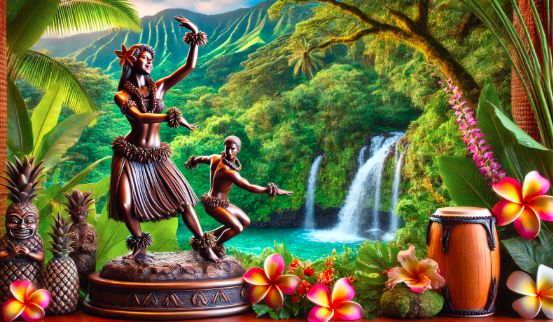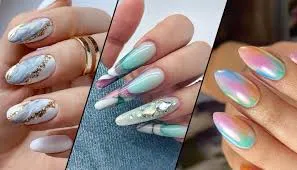
Introduction
halauin stauettes inquestion represent a fascinating facet of Hawaiian culture, blending artistry with profound heritage. These miniature sculptures, often depicting hula dancers and traditional Hawaiian scenes, carry significant cultural and spiritual meanings. Understanding their origins, craftsmanship, and role in preserving Hawaiian traditions can offer a deeper appreciation of these exquisite pieces.
Historical Background of Hula
Hula is more than just a dance; it is a storytelling medium that conveys Hawaiian history, legends, and spirituality. Dating back centuries, hula emerged as a sacred practice performed in honor of deities, nature, and the community. Over time, it evolved into a celebrated art form, becoming a symbol of Hawaiian identity.
The dances are often categorized into two forms: Hula Kahiko (ancient hula) and Hula ʻAuana (modern hula). Each form plays a vital role in showcasing Hawaii’s cultural diversity. halauin stauettes inquestion capture these traditional performances, immortalizing them in artistic creations.
Significance of Halauin Statuettes
Halauin statuettes are more than decorative items; they embody the grace, strength, and spirituality of Hawaiian traditions. These figurines serve as tangible connections to the past, preserving the beauty of hula for future generations. From the dancer’s poised movements to the intricate details of their attire, each statuette tells a unique story.
For collectors, these statuettes are prized for their ability to encapsulate Hawaiian culture in a form that is both accessible and timeless. Their presence in homes and galleries serves as a tribute to the rich heritage they represent.
Notable Artists and Their Contributions
Kim Taylor Reece
One of the most celebrated names in Hawaiian art, Kim Taylor Reece, has dedicated his career to capturing the essence of hula through sculptures and photography. His works, such as “Aloha” (Greeting) and “Kilohinani” (Heavenly Gaze), are masterpieces that reflect his deep connection to Hawaiian traditions. His ability to portray the fluidity and emotion of hula in bronze and resin is unparalleled.
Other Influential Artists
Several other artists contribute to the legacy of halauin statuettes. Their works explore various materials and styles, enriching the diversity of these cultural artifacts. Together, these artists ensure the ongoing relevance of Hawaiian artistry in the global art scene.
Materials and Craftsmanship
Creating halauin statuettes involves meticulous attention to detail and a profound respect for tradition. Common materials include:
- Bronze: Renowned for its durability and classic appeal.
- Resin: A versatile and cost-effective medium.
- Porcelain: Used for intricate and delicate designs.
Each statuette undergoes several stages of craftsmanship, from initial design sketches to the final polishing. The result is a piece that not only looks beautiful but also feels authentic.
Cultural and Spiritual Significance
Halauin statuettes are imbued with cultural and spiritual values. They symbolize the aloha spirit, a Hawaiian concept encompassing love, compassion, and harmony. The statuettes also honor the hula’s role in connecting individuals to their ancestors and the natural world.
Collectors and admirers often find that these figurines evoke a sense of peace and inspiration. Displaying them in homes or offices is a way to keep the spirit of Hawaii alive in everyday life.
Commercialization and Cultural Sensitivity
As the popularity of halauin statuettes grows, so does the risk of cultural misrepresentation. Mass production has sometimes led to inaccuracies in depicting traditional attire or dance movements. It is crucial to approach these figurines with cultural sensitivity, ensuring that they respect and honor their Hawaiian origins.
When purchasing halauin stauettes inquestion, buyers should prioritize authenticity. Supporting local Hawaiian artists not only guarantees quality but also helps sustain their cultural practices.
Collecting and Displaying Halauin Statuettes
For enthusiasts and collectors, assembling a collection of halauin statuettes can be a rewarding experience. Here are some tips:
- Research Authentic Pieces: Learn about the artists and their works to ensure you are acquiring genuine items.
- Proper Display: Arrange statuettes in well-lit areas, such as display cases or shelves, to highlight their intricate details.
- Maintenance: Regular cleaning with a soft cloth will preserve the statuette’s appearance.
A thoughtfully curated collection not only adds aesthetic value but also serves as a testament to your appreciation of Hawaiian culture.
Conclusion
halauin stauettes inquestion are more than artistic creations; they are cultural treasures that preserve the legacy of Hawaiian hula. From their historical roots to their modern-day significance, these figurines offer a glimpse into a world rich in tradition and artistry. By understanding their cultural importance and supporting authentic craftsmanship, we can ensure that the spirit of Hawaii continues to inspire generations to come.
Related Articles
The Ultimate Guide to the Mariah Wig by Henry Margu
Comprehensive Guide to the 024 AV Parts Diagram: Maintenance and Insights
Best Side Window for Van Driver Side Transit Extended – A Complete Guide
The Ultimate Guide to Sterling Silver Arrow Bangle Bracelet: History, Styling, and Care






